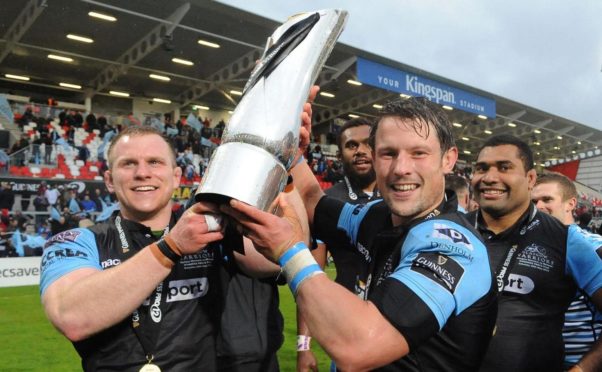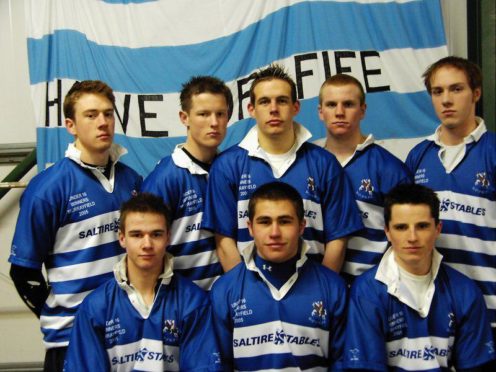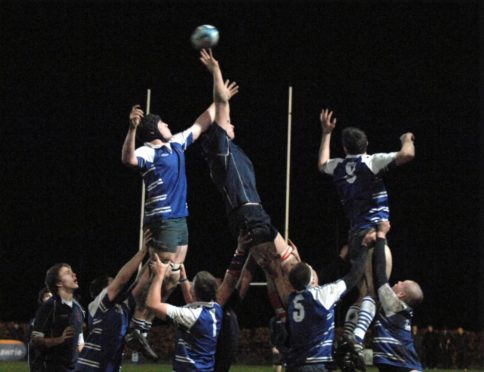Chris Fusaro’s announcement of his retirement from professional rugby on Wednesday made me feel very old.
Can it really be 15 years since Fuzz was part of that Howe of Fife youth team that won the junior grand slam of Scottish national titles?
The historic one of the haul was, of course, the Scottish Schools Cup at Murrayfield. In their occasional other guise as the Bell Baxter High School first XV, they were the last state school to win that trophy, beating Dollar Academy 20-8 in the final.
Indeed, they have been the sole interruption of the domination of public schools in that prestigious competition in the last quarter-century. No other state school has even reached the final of the Schools Cup since.
A wonderful and exciting team
Bell Baxter/Howe were an outlier even then. Coached by Garry Horne – Pete and George’s dad – and John Lathangie, the boys were all from Cupar and environs. They were basically just a bunch of pals who came up together from minis. With some superb coaching, they happened to gel into a wonderful and exciting team.
Horne the elder (a full back and goalkicker in those days) and Fusaro eventually went on to Scotland senior honours. Back rower Michael Fedo played for Scotland Under-20 and Scotland 7s, centre Stevie Wilson also played age-group for his country.
Rory Drummond, Ross Aitken and Stewart Lathangie are all still playing club rugby to a high level (well they were before the present lockdown).
The team’s captain and No 8 Chris Mason, I still believe, was as good a natural rugby player as any of them, but he just preferred to play the game with his mates at home.
He led the Howe of Fife club team to National League One and the quarter-finals of the Scottish Cup. At his best, in my opinion, there was no more entertaining and exciting player to watch in the entirety of Scottish club rugby.
The best schools team I’ve ever seen
I covered the 2007 semi-final against Merchiston – then the undoubted power in Scottish schools rugby, with Fraser Brown their captain – at Beveridge Park in Kirkcaldy and the final at Murrayfield against John Foster’s always powerful Dollar.
Bell Baxter were pretty much unstoppable – fast, strong and with rugby basics so ingrained that they seemed automatic. They won both games comfortably, and all of Cupar seemed to be there to watch them.
They are still the best school team I’ve ever seen, and I saw Dollar’s team with John Barclay as captain, the great George Watson’s teams and the Merchiston teams coached by Frank Hadden.
It was obviously not just happenstance that made them a great team. But the circumstances that led to them all staying together have long gone.
Just a few years later, Pete’s younger brother George played for the Howe, but he was snapped up on a rugby scholarship to Strathallan School. Matt Fagerson and Jamie Ritchie, who were not wholly developed by the Howe but played for them, took the same route.
The monied private schools dominate schools rugby
And that’s where we are now. It’s not that old, tired “class” chestnut that means the public schools dominate schools rugby, it’s just purely money – the same way that Rangers and Celtic dominate youth soccer.
Clubs that develop decent young players see them spirited away on scholarships. North Berwick RFC, who build a strong youth scheme in the same way as Howe did, saw their best players snapped up by the Edinburgh schools.
You can’t blame parents. Quite apart from the educational value of a scholarship, the facilities at schools like George Watson’s, Merchiston, Strathallan and others are of the highest class. Rectors and bursars are all too aware of the value of a strong rugby team to promote their school.
The late Foster, maybe the greatest junior coach of my generation, always wanted a level playing field for all – the best schools, private or state, playing in the same competition as the best club youth teams.
The benefits were obvious; a raising of standards all round, and more incentive for the best community clubs like Stirling County, the Howe and North Berwick, perhaps even a resurgence of the Border clubs.
It never happened. Sadly, as community rugby begins to rebuild itself after the nightmare of 14 months silence because of the pandemic, it seems obvious that it never will.
Not a time nor a competition for a valued judgement
A crisis is constantly happening in Scottish pro rugby at the moment, only it bounces back and forth along the M8 like a ping-pong ball.
Just a few weeks ago Danny Wilson looked under pressure as Glasgow capitulated to Benetton in Italy. However, two successive wins over Edinburgh now put Richard Cockerill firmly under the microscope.
We’ve forgotten the event they are playing in – the Rainbow Cup – is utterly meaningless, other than giving the opportunity of exposing young and fringe players to the fire, however actually tepid that fire might be.
Cockerill seemed to do a lot more experimenting than Wilson in the two 1872 Cup games, and that was maybe the deciding factor in his team suffering two losses.
But really, it matters not a jot. The season has dragged on much too far anyway, and it’s been one when players and budgets have been strained to breaking point.
For me both coaches get a free pass until we start next season for real. Then we can make a valued and accurate judgement as to where the two teams actually are.


